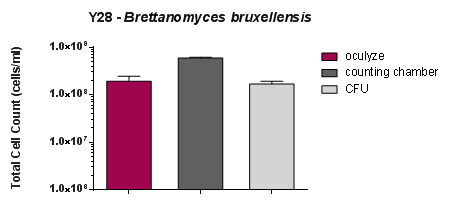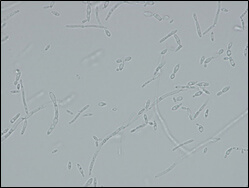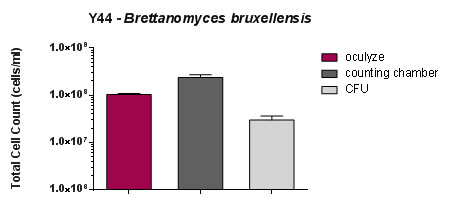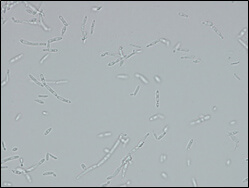Automated Brettanomyces Cell Counts
Automated Brettanomyces Cell Counts – Comparison between a manual analysis and the Oculyze System
Brettanomyces tests were carried out at DLR Rheinpfalz by Dr. Kathrin Diesler.
Brettanomyces (Dekkera) yeasts are over-fermenting yeasts that can lead to secondary fermentation in finished beer or wine. Brettanomyces is the anamorphic form of Dekkera, meaning it reproduces through asexual reproduction. B. bruxellensis, together with D. anomala, is one of the most common harmful yeasts in the conventional beer and wine production. These yeasts form undesirable compounds such as 4-ethylphenol and ethyl-4-guaiacol. Increasingly, however, these special properties are also being used, such as in the production of Belgian sour beer.
Determining the cell count for Brettanomyces (Dekkera) yeasts is a very challenging task due to the very variable morphology. They can be present as individual elongated or round cells, but also as chains of different strengths. Oculyze has addressed this problem and integrated an image analysis specially tailored to counting Brettanomyces into the Better Brewing App. In cooperation with the DLR Reinlandpfalz, the Oculyze analysis was compared with a manual count on the microscope and with the CFU method for various Brettanomyces / Dekkera strains from the DLR internal strain collection. It was found that the automatic evaluation could match the standard CFU count for most of the strains better than the manual evaluation. Results for the individual strains are summarized in the following graphics.
Average cell count of three counts per method and microscopic image of used strain
















Image and data source: Dr. Kathrin Diesler (DLR Rheinpfalz)
Brettanomyces Testing Results
Do you need more information? Contact us at [email protected]
Also, you can now get access to a fully functional demo account to test our Web App. Completely free of charge and with no commitment to purchase.


